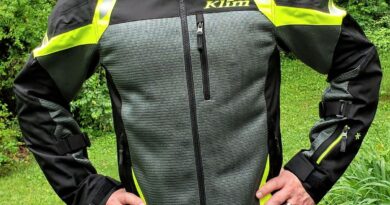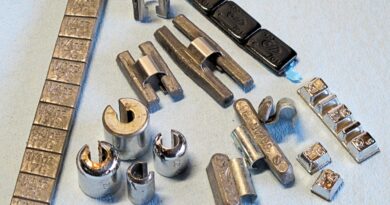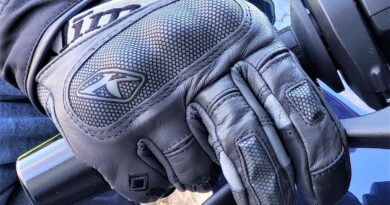Two weeks in Europe with Klim’s Latitude suit
My spring 2023 two-week European tour with IMTBike (“Trip of a Lifetime: Riding through Spain and Portugal with IMTBike”) was the perfect excuse to test some new riding gear. I’ve long admired Klim’s Latitude suit, and its latest redesign became available just in time for this adventure. The weather on my trip was expected to feature moderate but highly variable temperatures (50-90 degrees F) with some rain, so versatility was a high priority in my gear selection. The Latitude’s extensive ventilation, roomy cut (for layering underneath), and Gore-Tex waterproofing promised exactly that—one outfit that could handle the full range of conditions I’d encounter, while also providing a high level of protection and lots of storage. It was also plenty light and packable for an overseas flight. Klim gear has performed extremely well for me over the years, so I had good reason to believe its promise would be fulfilled. Spoiler alert: it was—in spades!
Fit and Finish
The first example of the updated Latitude I received was a big disappointment, not only because my hopes had been so high, but because the garment itself was sooo large! Although I’d ordered the jacket and pant sizes that have fit me properly in Klim’s dirt and street lineups for decades, I had to exchange those for smaller versions this time. Even after downsizing, I found both jacket and pants fit very loosely. While this dimensional generosity created a blousy effect while wearing just a thin base layer, it wasn’t so extreme that fabric flapped annoyingly in the wind or bunched uncomfortably anywhere. In hot weather, the spacious interior allowed cooling air to flow easily into and out of the suit, and in cold weather I could wear several layers underneath—including Klim’s Maverick down jacket—and still maintain good flexibility and range of motion. I’m content trading a tailored fit for extreme versatility and consistent comfort.
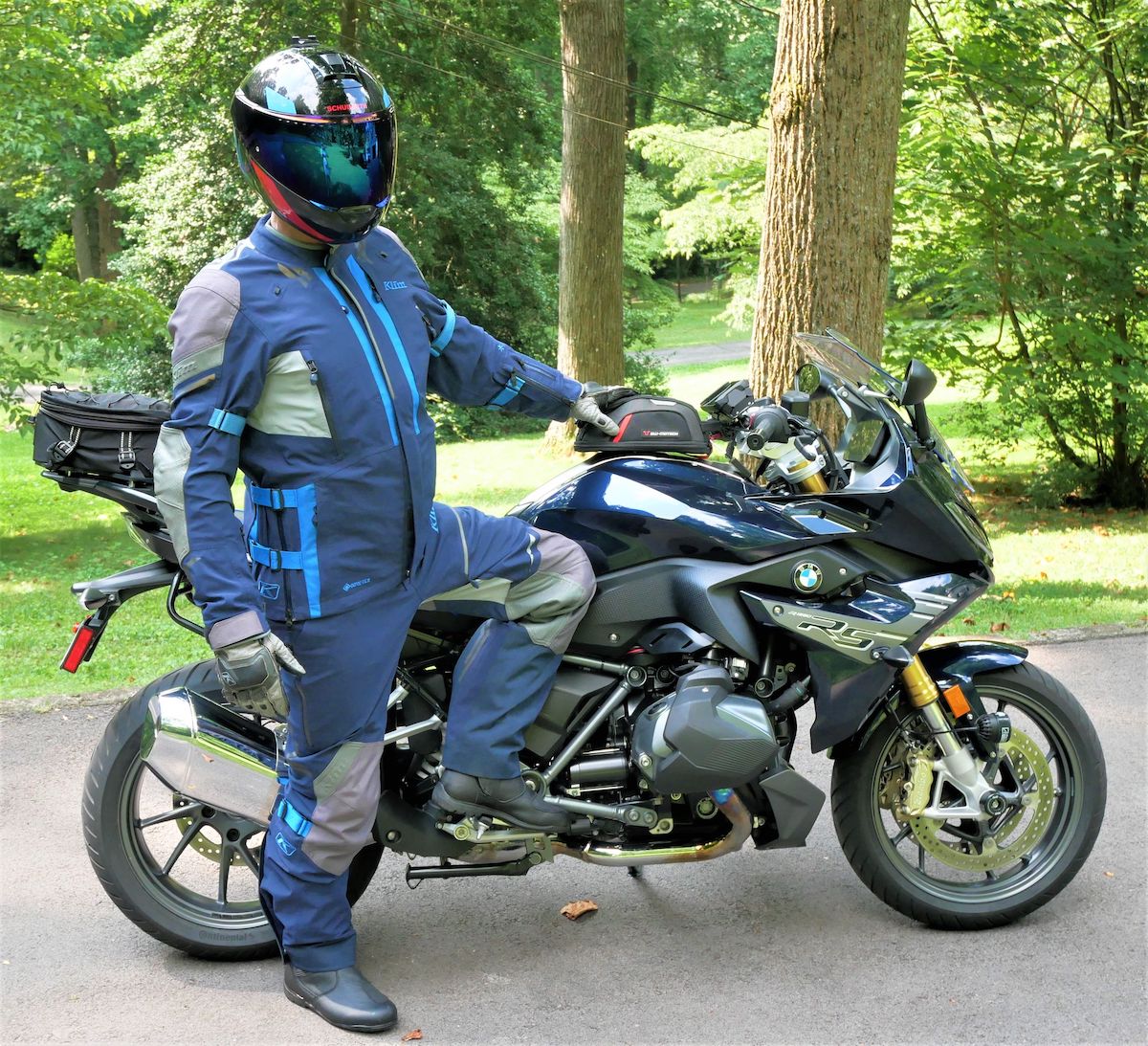
Further contributing to my contentment with this tradeoff is the Latitude’s sleek design and light weight. All of its seams, zippers, and pockets lie flat in a standing position, streamlining the suit’s profile. Klim has done an excellent job straddling the need for a relaxed, non-binding fit in an upright or sport-touring riding posture, plus easy-going neutrality off the bike. Although the arms and legs are rotated/articulated enough for the former, they don’t interfere at all with the latter. Textile technology continues to improve, and the Latitude’s fabric is satiny smooth and pliable right from the start—this isn’t your father’s rough, crunchy, original Cordura. It’s very thin and light where it can be, and reinforced with seriously abrasion-resistant materials where it needs to be. Hence, weight and bulk are minimized without commensurate sacrifices in protection.
My bodily dimensions are statistically average for the species and I typically wear “medium” clothing (including previous Klim gear). Nevertheless, I’m admittedly on the smallish side of American morphology. At 5’8” tall, 160 lbs., with a 39” chest, 32” waist, and 30” inseam, I’m apparently the smallest creature the current Latitude can accommodate; my jacket and pants sizes are the minimums on offer. Maybe the American market has, er, expanded to the point Klim had to shift its sizing scale, but it’s a shame anyone smaller than me probably won’t be able to enjoy this suit. Jackets are available in sizes S-4XL, and Klim provides short, regular, and tall versions of most Latitude pants with 30-44” waists. See their online size chart, but I suggest you also speak to a sales rep as the chart pointed me to my usual sizes, which arrived way too large.
If your suit ends up fitting like mine, be prepared for a little teasing. The unavoidably stiff rubberized waterproof zippers on the chest (a vent and pocket on each side) fold sharply outward if you slouch, conspiring with the loose fabric to create an effect reminiscent of the bullet bras of the 1940s. Have a sense of humor; your riding buddies are just envious, and this actually keeps the chest vents open in the wind.
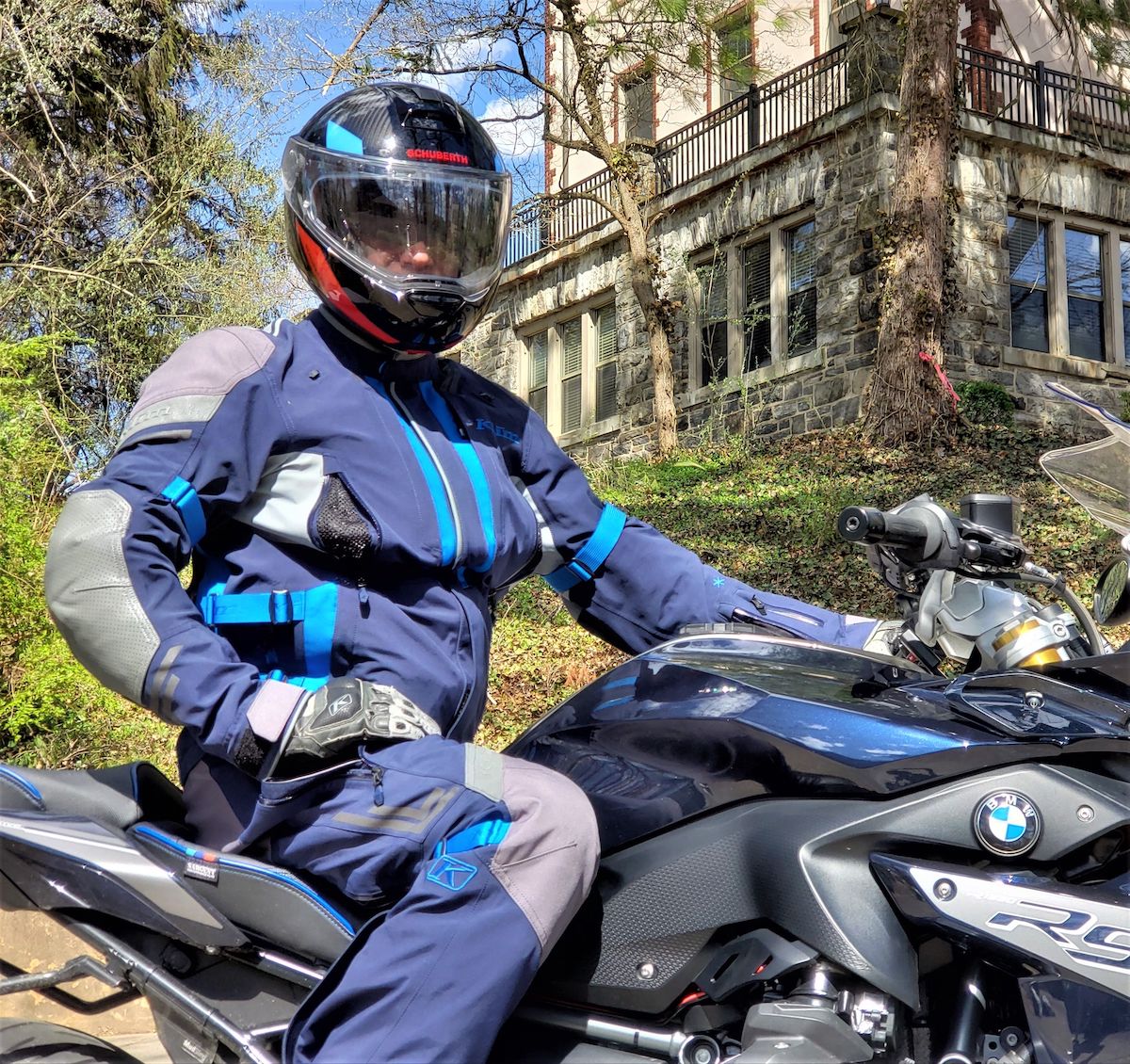
Attention to detail has long been a Klim hallmark, and the Latitude certainly continues this tradition. Noteworthy elements on the jacket include “carbon black” 3M Scotchlite reflective stripes that remain a subtle dark gray until hit with light, at which point they flash brilliant silver. All external zippers are premium YKK waterproof items with pull extensions so useful they actually allow the rear exhaust vents to be opened while riding. Speaking of pull extensions, there’s an Easter Egg hidden in plain sight on the collar cinch string—a tiny pull tab shaped like Idaho, where Klim is headquartered. Small loops on the collar can be hitched to little hooks near the shoulders, inviting cooling airflow at the neck and upper chest while keeping the front zipper mostly closed. The jacket’s lower edge is adjustable via zippered gussets above each hip, the double-headed main zipper, and an elastic cord within the hem. Fit at both upper and lower arm sections is managed by accent-color straps—such straps are also found on each side of the torso. The zippers over the ventilated wrist gussets have been thoughtfully designed with an indentation at the end so they don’t poke the flesh when worn inside glove gauntlets. Two Velcro tabs that retract into a beltline sheath allow substantial adjustment at the pants waist, and three snaps at each leg cuff snug those openings down to work with any style boot. Adjustable straps alter tightness at each leg’s upper calf. Both jacket and pants are graced with an anti-microbial, moisture-wicking mesh liner decorated in a two-tone geometric pattern. Branding appears in numerous places but is tastefully understated. Four colorways are offered, including a blue/gray combo that just happens to precisely match my R 1250 RS’s paint.
Protection
Vented LP1 Level 1 D30 armor fits neatly into ventilated pockets in the Latitude’s shoulders, elbows, hips, and knees, while a ventilated D30 Viper CE Level 1 pad covers much of the back. The elbow and knee pockets allow considerable adjustment, but given the excess leg length this suit had for my body, the knee armor still ended up a tad lower than I’d prefer. This now-familiar viscoelastic armor—soft and compliant until impact, then instantaneously stiff to absorb and disperse force—is very comfortable and the industry standard for protection. Klim sells Level 2 versions separately for even greater shock absorption. Robust 600D Cordura overlays can be found on the shoulders, knees, seat, and pants cuffs. Perforated goat leather guards the elbow/forearm areas and supplies a grippy interface with the motorcycle at the inner knee; it also appears in a variety of welts and embossed trim panels for a supremely refined aesthetic.
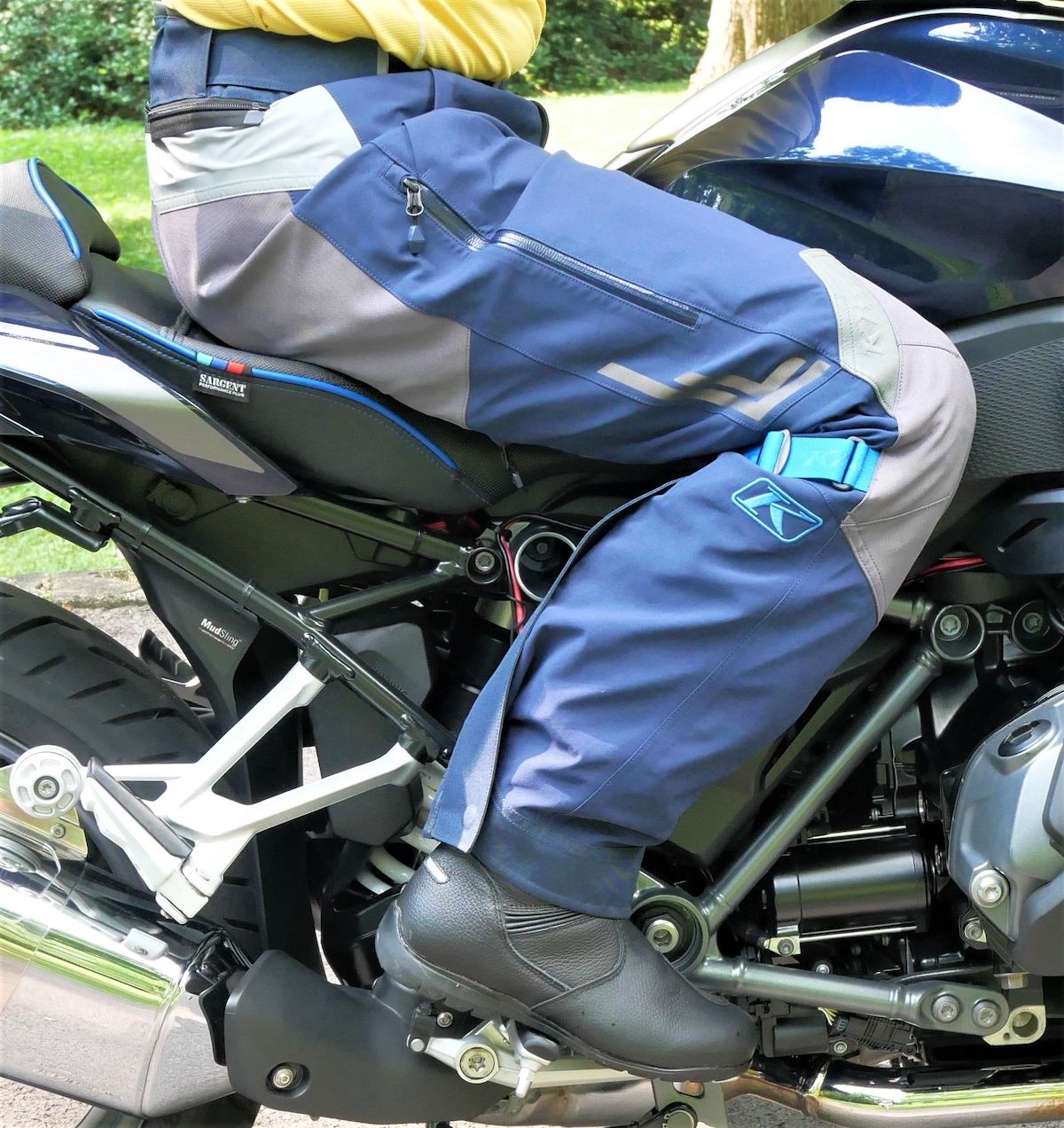
Protection from impact and abrasion is only part of this package; a Gore-Tex performance shell (laminated) membrane provides an impenetrable barrier against rain and wind while still allowing water vapor to exit from inside the suit. Special stretch Gore-Tex panels under the arms, behind the shoulders, across the upper seat yoke, over the knees, and in a gusset at the crotch all aid mobility while denying moisture entry. A Velcro-equipped storm flap fortifies the main zipper’s watertightness from the front, and the pants fly is fully gusseted from behind. Velcro tabs at the jacket cuffs and collar help seal out wind and water at those junctures, and a zipper at the lower back will lock jacket and pants together if desired. While on my tour, I got to assess the Latitude’s waterproofing during a torrential downpour that lasted for hours. I remained completely dry with only the small windscreen of an R 1250 GS (non-Adventure) shielding me from the elements. The one place moisture intruded was at the lower edge of the left leg’s thigh pocket. This was enough to dampen my International Driver’s License and passport, but the water never reached my skin. I have since ridden in less dramatic rain without any problem whatsoever.
Ventilation and Storage
The Latitude features fairly large zippered vents at the outer chest, wrist/forearms, lower rear torso, and outer hip/thigh, with small exhaust vents under the hamstrings. I would not have guessed those last ones would accomplish much but was surprised to find they added significantly to the cooling effect. All vents are backed with a mesh screen to prevent unwanted intrusions by insects or debris, and those at the wrists can be opened from either end. Depending on your position, the vents often prop themselves open in a way that enhances airflow. There’s also the aforementioned option of hooking the collar wide open. This was a much-appreciated alternative to having the wind press other collars flat against my neck despite having those jackets partially unzipped.
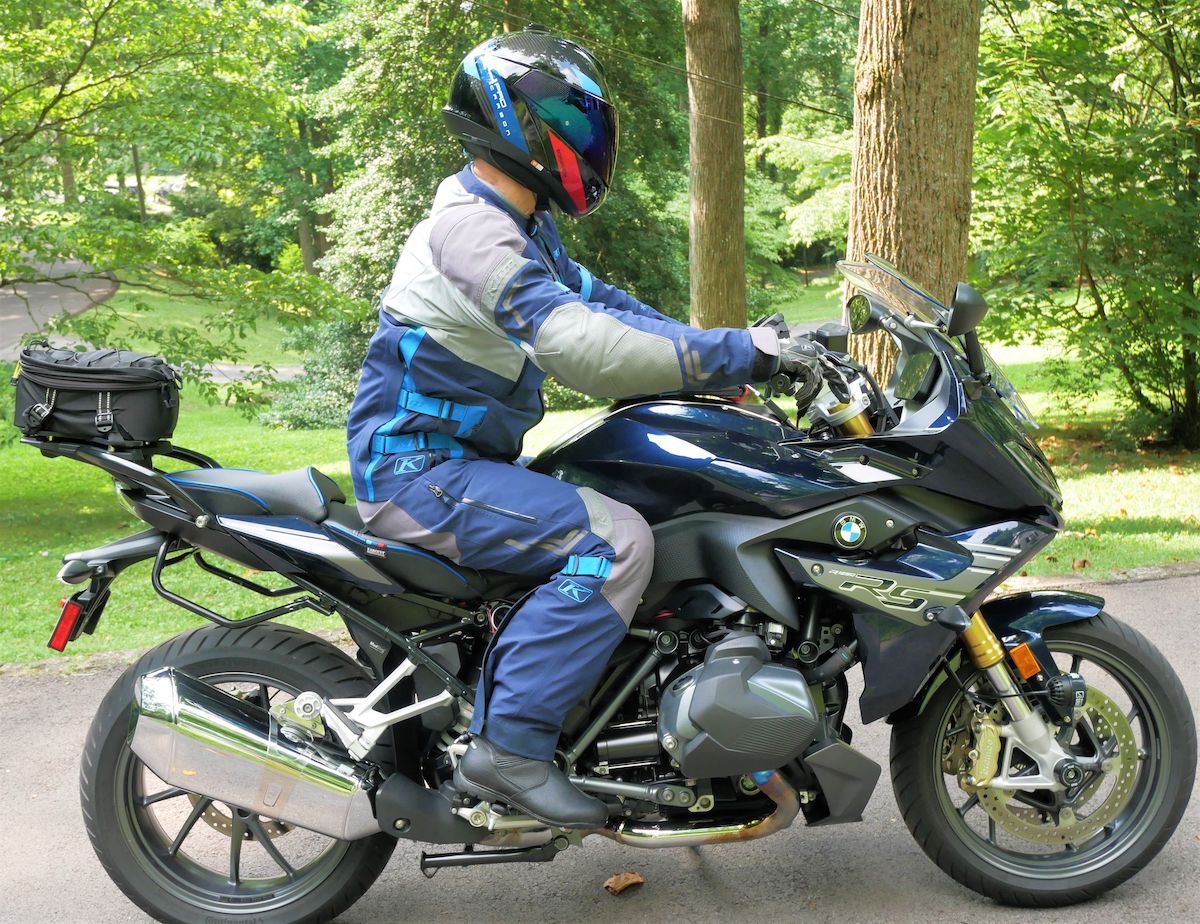
As anyone who has enjoyed the benefits of Gore-Tex knows, its protection comes at a cost, and not just monetary. “Breathable” does not mean breezy; in fact, the windproof aspect of Gore-Tex can make such gear feel suffocating in the heat. Water vapor may be escaping, but air isn’t necessarily circulating. Even vented Gore-Tex can be stifling. Not so with the Latitude. The number and positioning of its vents ensure plenty of airflow through this suit, and it’s easy to regulate during transitional temperatures. Once the mercury rises into the upper 80s, I reach for my LD Comfort evaporative cooling shirt, which has worked great in the Latitude’s microclimate, but even without this substantial enhancement, the Latitude proved acceptably comfortable up to 90 or so, as long as I didn’t have to sit still in traffic—which is as good as I could hope for, even without Gore-Tex.
Behind the Latitude’s other set of zippers lie a plethora of pockets. Large handwarmers in the jacket are augmented by roomy external chest pockets on both sides and a small pocket on the left forearm, which carries a symbol to alert emergency medical personnel you may have stored important health information there. It also has a secret compartment, as does the back protector pocket, just in case your ride includes a bandit encounter. Inside the jacket are four more zippered pockets in the liner. The pants have large slash pockets where you’d expect, along with a big square pocket on the front left thigh. Although the latter has a thin gusset at its lower edge, it pulls flat across your leg in the riding position, so it’s only good for items shaped accordingly (just put important papers in a plastic bag!).
Conclusions
My Latitude has provided unsurpassed comfort and protection across an extremely wide range of conditions. In some sense it’s just a simple shell, as opposed to “system” suits with removable liners or covers, but it’s a shell with fantastic functionality and versatility. Add your own a la carte base layers and it works beautifully from 40 degrees to triple-digits, with no need to add anything if it rains. Its name is perfectly apropos, not only in its allusion to global touring geography, but also its breadth of capabilities. I have specialized equipment I’ll choose over the Latitude on certain occasions, but if I could only have one motorcycling outfit, this would be it. That said, brace for the price tag: MSRP is $800 for the jacket and $650 for the pants. While I haven’t owned Klim’s even pricier top-of-the-line ADV gear, I’ve known a handful of riders who have, and all of them felt to some degree they’d overpaid for overkill, given the kind of riding they actually do (as opposed to imagine doing). By comparison, the Latitude is a bargain, even if you swap out its Level 1 armor for Level 2 bits (an additional $210 for the complete set). You’re still paying a lot, but you’ll get the full benefit of this gear without riding from Prudhoe Bay to Tierra del Fuego. You don’t always get what you pay for, but Klim reliably delivers good value. The Latitude strikes me as the sweet spot where the vast majority of riders will max out that value in real world functionality.

